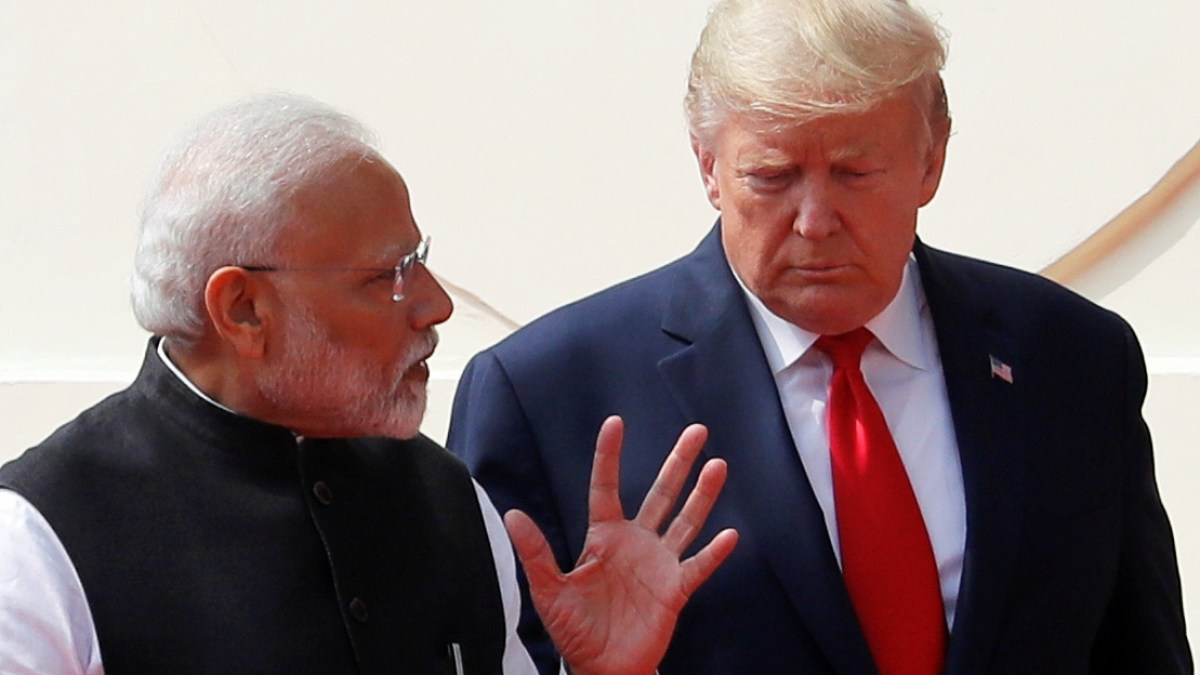United States President Donald Trump has issued an executive order imposing an additional 25-percent tariff on goods from India, as penalty for importing Russian oil.
Wednesday’s hike comes in addition to the 25-percent tariff India already faces, making it subject to one of the US’s highest import tax brackets under Trump, at a total of 50 percent.
In his executive order, Trump explained that Russia’s continued military actions in Ukraine constituted a “national emergency” and it was therefore “necessary and appropriate” to place heightened tariffs on India, a major consumer of its petroleum products.
“I find that the Government of India is currently directly or indirectly importing Russian Federation oil,” Trump wrote.
“The actions and policies of the Government of the Russian Federation continue to pose an unusual and extraordinary threat to the national security and foreign policy of the United States.”
The tariff increase is slated to come into effect 21 days after the announcement, leaving a window open for India and the US to negotiate a lower rate.
But the move threatens to further complicate US-Indian relations. Brazil is the only other country to face a 50-percent overall tariff rate.
Strained US-India relations
India and the US engaged in five rounds of trade talks in the lead-up to Wednesday’s announcement. In April, US Vice President JD Vance even travelled to New Delhi to help helm the negotiations.
But months of haggling have failed to produce a trade agreement, and experts say US-India ties are now facing their most serious crisis in years.
Experts have pointed out that India’s struggle to cement a deal with Trump contrasts with the situation of its neighbour and rival Pakistan, which negotiated a lower tariff rate in July.
Wednesday’s announcement coincides with reports that Indian Prime Minister Narendra Modi would visit China for the first time in over seven years later this month.
An Indian government source told the news agency Reuters that Modi would attend a security summit in the city of Tianjin, a sign of easing tensions with China, despite past clashes over borders and water rights. Russian officials are also expected to attend.
Up until recently, the relationship between Trump and Modi was considered exceptionally tight.
Modi was one of the first foreign leaders to visit Trump after the Republican leader took office for a second term in January. During Trump’s first term in 2019, the president went so far as to host a dedicated Texas rally for the Indian prime minister, calling the event “Howdy Modi”.
Modi, for his part, has embraced Trump’s “Make America Great Again” movement, offering his own spin on the slogan: “Make India Great Again”.
But Trump has been outspoken in his belief that India’s economic practices are unfair to the US, and he has pledged to reduce trade deficits with foreign trading partners overall.
According to US government trade statistics, India exported nearly $87.3bn in goods and services to the US in 2024, dwarfing the amount of US exports to India, which totalled $41.5bn.
Pressure to end Ukraine war
Trump has also grown increasingly frustrated with Russia, despite his previously warm relationship with that country’s president, Vladimir Putin.
Upon taking office for a second term, Trump positioned himself as a “peacemaker”. He had previously vowed to end the war between Russia and Ukraine within 24 hours if re-elected, a pledge he has since walked back, saying it was meant to be “sarcastic”.
But Trump has pressed forward with peace negotiations between the two countries. But with no ceasefire in sight, Trump announced in July a deadline for Russia to wind down its military campaign — a deadline that expires on Wednesday.
Russia first launched its full-scale invasion of Ukraine in February 2022, and the war has since become a costly, slow-grinding conflict.
In his executive order on Wednesday, Trump left open the possibility that other importers of Russian oil products could be subject to higher tariffs, just as India had.
He also reserved the right to “modify” the executive order if any retaliatory action were taken — or if countries like India “take significant steps” to align with US policy goals.
The tariff announcement followed meetings by Trump’s top diplomatic envoy Steve Witkoff in Moscow aimed at pushing Russia to agree to peace in Ukraine.
Indian National Security Adviser Ajit Doval was likewise in Russia this week, with Reuters reporting that he was discussing the pressure to end Indian purchases of Russian petrol.

